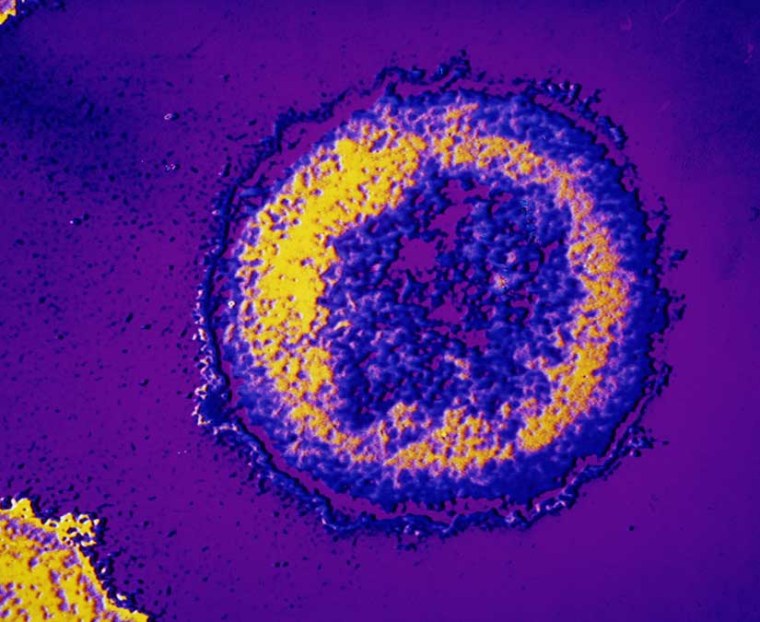Content provided by LiveScience
Researchers are putting viruses to work in the lab, using them to build tiny devices that gather energy from mechanical forces, like the press of a finger, to run a small liquid-crystal display.
"More research is needed, but our work is a promising first step toward the development of personal power generators, actuators for use in nano-devices, and other devices based on viral electronics," study researcher Seung-Wuk Lee, at the University of California-Berkeley, said in a statement.
ANALYSIS: Engineered Virus Could Kill Cancer
These first steps could lead to a device that could work as a paper-thin generator. This generator could be embedded in the sole of your shoe, making energy and charging your phone as you walk, because harmless viruses are converting mechanical energy into electricity.
The scientists tested their approach by creating a generator that works by tapping a finger on a postage stamp-sized electrode coated with specially engineered viruses. The viruses convert the force of the tap into an electric charge, a property called piezoelectricity.
Most piezoelectric devices are toxic and very difficult to work with, so the researchers decided to see if viruses, specifically the bacteria-infecting virus M13, could do the trick since the individual particles self-assemble into sheets, an important quality when building tiny devices.
NEWS: Virus-Built Wearable Batteries Could Power Military
To see if these viral particles had piezoelectric properties, the researchers applied an electrical field to a film of M13 viruses and watched what happened using a special microscope. Helical proteins that coat the viruses twisted and turned in response — a sure sign of the piezoelectric effect at work.
They then upped this effect by manipulating the viral genes to add four negatively charged molecules into the viruses' outer coat. These negative charges increase the voltage the virus is able to put out.
The milestone could lead to tiny devices that harvest electrical energy from the vibrations of everyday tasks such as shutting a door or climbing stairs and points to a simpler way to make tiny electronic devices. They then stacked multiple layers to see if they could amplify this, and found a stack about 20 layers thick exhibited the strongest effect.
The researchers made a virus-based generator about 0.4 inches (1 centimeter) on each side. This film was then sandwiched between two gold-plated electrodes, which were connected by wires to a liquid-crystal display.
When pressure is applied to the generator, it produces up to six nanoamperes of current and 400 millivolts of potential. That's enough current to flash the number "1" on the display, and about a quarter the voltage of an AAA battery.
"We're now working on ways to improve on this proof-of-principle demonstration," Lee said. "Because the tools of biotechnology enable large-scale production of genetically modified viruses, piezoelectric materials based on viruses could offer a simple route to novel microelectronics in the future."
More From LiveScience.com
